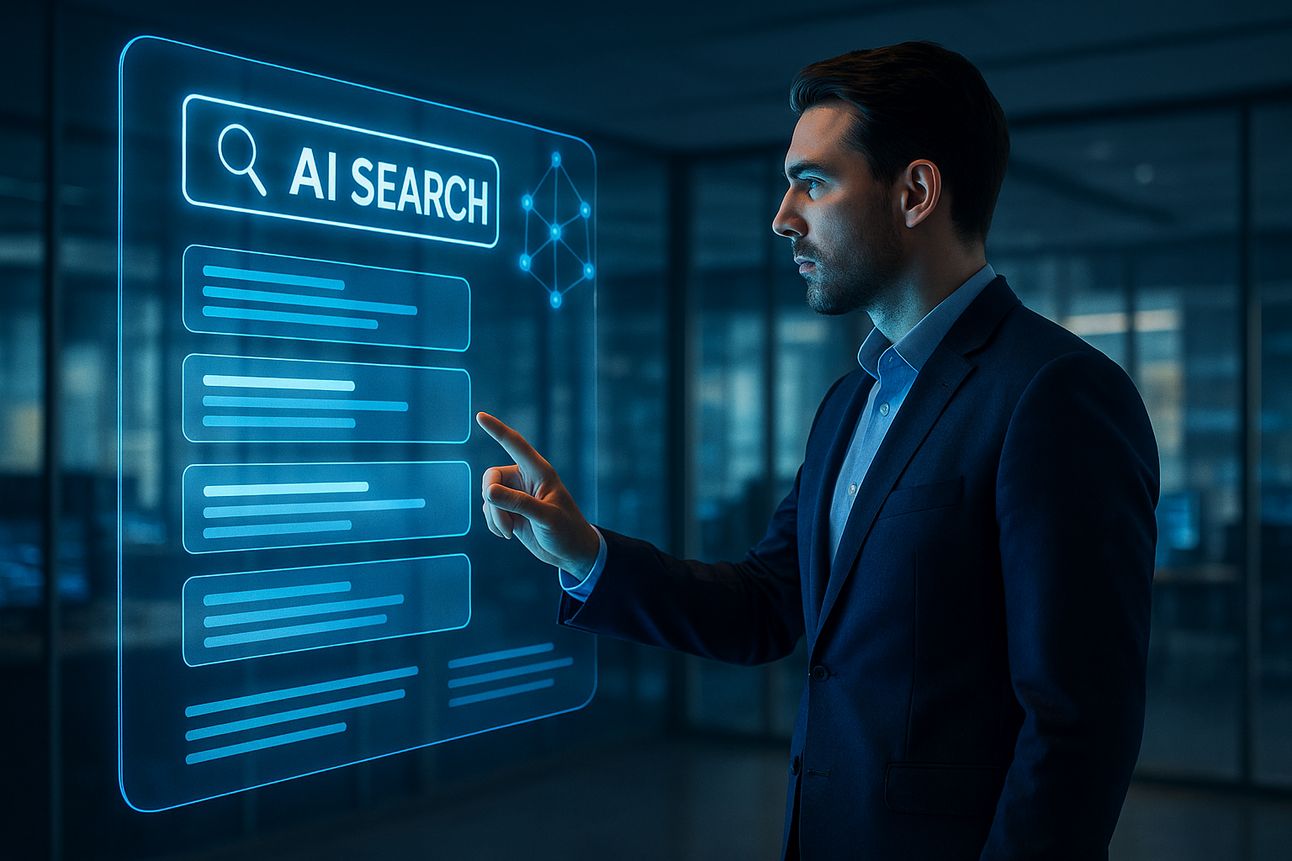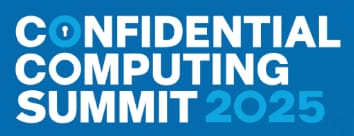When I first got online, there were no search engines.
Just directories—clunky, static link maps that sorted the web like a digital yellow pages.
Yes, I know some of you have no idea what I’m talking about. For those that don’t: they were massive, ugly books of ads for companies. The key feature was that, to come up first in your category, you did things like name your company AAA Locksmiths.
You didn’t search; you clicked and hoped. Then came Yahoo!, Altavista, and eventually, Google.
Google didn’t just make search faster. It made it meaningful. With its PageRank algorithm, Google turned the internet into an information hierarchy—ranking pages based on reputation and relevance, not just metadata.
Search Engine Optimization (SEO) and Search Engine Marketing (SEM) emerged in its wake, creating a digital economy built on visibility.
Now we’re standing at the edge of another transformation. AI algorithms are rewriting the logic of search—no longer delivering results to browse, but answers to act on.
Here’s how that changes everything.

🎙️ AI Confidential Podcast - Navigating AI Evaluation and Observability with Atin Sanyal
☕️ AI Tangle - Another Upgrade to Gemini, The Debut of Mistral Code & Reddit's Lawsuit Against Anthropic
🔮 AI Lesson - Claude 4, A Capable Alternative to ChatGPT
🎯 The AI Marketing Advantage - Can AI Make Humans Laugh?
📚 AIOS - This is an evolving project. I started with a 14-day free Al email course to get smart on Al. But the next evolution will be a ChatGPT Super-user Course and a course on How to Build Al Agents.

Detect security design flaws at scale (however your code is generated)
Check out the latest from Endor Labs, with their AI Security Code Review: A Multi-Agent Approach for Detecting Security Design Flaws at Scale.


How AI is Changing Search
AI is changing how we find, filter, and act on information—and what you need to know to benefit from it.
I remember when Google was a noun, not a verb. It was one search engine in a sea of search engines. Today, we Google as a replacement for “search”. But the younger professionals are trading Googling for “ChatGPTing”. They ask for answers rather than scrolling through pages of blue links on search pages to find the information they need. And they are getting answers much faster.
AI is not just changing how we search—it's changing what it means to find, understand, and act on information. This shift—from pages of links to synthesized, contextual answers—alters the foundations of discovery, decision-making, and digital commerce. While this transition poses challenges for those dependent on traditional SEO or ad-driven models, it unlocks enormous benefits for users and enterprises: faster access to insights, richer internal knowledge discovery, and a strategic edge for those who adapt early.
AI's Search Revolution
Everyone has experienced it: you need a specific piece of information, fast. You turn to search, only to be handed a screenful of links—some redundant, many irrelevant—requiring time and judgment to parse. It's not just frustrating; it's inefficient, especially in high-stakes, time-sensitive decisions. You’re faced with a page of blue links and click through each one, hoping it holds the answer. It's time-consuming and frustrating. Now there's AI-powered search. Or what we might call Answer Engine Optimization (AEO).
That familiar screen of blue links is no longer the default. Search is being rebuilt—from indexing pages to inferring intent. AI systems now operate less like librarians and more like active participants in your workflow, interpreting queries, synthesizing context, and returning answers—not just options.
AI systems now act less like librarians and more like research assistants—anticipating what you need, contextualizing responses, and often prompting the next action. For instance, a well-configured enterprise agent might not only retrieve an internal sales playbook in response to a query about discount policies but also draft a follow-up summary for customer outreach, schedule a calendar reminder, and log the activity in a CRM—all autonomously.
This marks the emergence of what some call the Agentic Web: a network where autonomous or semi-autonomous AI agents retrieve, interpret, and act on behalf of users. These agents don’t just summarize—they query, compare, and sometimes transact. The shift is away from user-driven discovery toward agent-mediated execution.
At the center of this shift are large language models (LLMs) enhanced with retrieval capabilities. These systems don't just match phrases; they extract relevant detail, reconcile contradictions, and produce outputs that anticipate the user's next question as much as their current one.
Perplexity is perhaps the clearest example of how the game is changing. Unlike traditional engines that return a page of links, or even generative experiences like Google’s Search Generative Experience (SGE) that append AI summaries to existing queries, Perplexity is built around the idea that the AI is your research partner. It doesn’t just find pages—it reads them, compares them, and cites its sources inline, giving the user both a high-quality synthesis and the means to verify it. The experience feels less like searching and more like you are getting a brief.
Strategic Implications for Content and Commerce
Search is no longer just a utility—it’s becoming the default interface for software. AI-powered search doesn’t just answer questions faster; it changes how users interact with digital systems.
Benedict Evans, a veteran tech analyst and former Andreessen Horowitz partner, noted in his 2025 AI Eats the World presentation:
Search is becoming the interface to computing.
This evolution positions AI-driven search as the next universal abstraction layer, much like graphical user interfaces and web browsers before it.
Evans, known for tracking major platform shifts, sees generative AI turning search into a front door for computing—similar to the rise of the browser or the smartphone touchscreen. But the metaphor deserves clarification: when search shifts from a buffet of links to a curated meal tailored to user context, fewer results are shown. That means fewer chances for businesses to earn impressions, clicks, and revenue.
This has profound implications for SEO and SEM—especially for content publishers, e-commerce vendors, and B2B marketers who rely on organic discovery and paid acquisition:
Traditional ranking factors matter less; semantic clarity and structured reasoning matter more.
AI systems don’t reward visibility. They reward usefulness.
Marketers and content teams must now think: “Would this page be cited by an LLM?”
In this world, the winners are not the loudest. They’re the most coherent.
But here’s the warning for those who rely on search:
If your business depends heavily on search traffic—especially from Google—you should be tracking traffic volatility with urgency. As AI takes a front seat, the volume and nature of search traffic are already shifting. Fewer users are clicking through links. More are getting their answers directly from AI summaries. This affects both:
Organic traffic (SEO): Your content may not appear or be needed if AI satisfies the query.
Paid search (SEM): Ad inventory may decline or become more expensive as user behaviors change.
Don’t assume last quarter’s performance is a baseline. Test, measure, and diversify. Optimizing for the Agentic Web requires more than metadata and backlinks—it requires content that is interpretable, verifiable, and useful to an AI acting on someone’s behalf. That means clear logic, embedded evidence, modular structure, and a tone that projects authority. Because what worked under Google’s old rules might not even show up under the new ones—especially if the agent already answered the question without showing your site.
How to Compete in the Age of AI Search
Search is starting to shift. It’s no longer about just optimizing for Google's crawler. It's about becoming legible to AI agents that read, summarize, and act on content with zero regard for traditional rankings. That means rethinking how knowledge is created, accessed, and measured—not just by humans, but by the systems now making decisions on their behalf. Here are five immediate steps to stay discoverable, valuable, and resilient:
Rethink SEO: Design content to be read, summarized, and reused by AI—not just crawled by a bot.
Rebuild Internal Knowledge Access: Index proprietary data into systems AI can retrieve from—think vector databases, not PDFs.
Monitor Search Trends: Watch the shift to answer-first interfaces. Google SGE is the beginning, not the end.
Audit Dependence on Google Traffic: If over 50% of your site traffic or customer acquisition flows through search, build contingency plans now.
What AI Search Means for Your Business
As search transitions from a gateway to a guide—from passive results to proactive responses—the implications are measurable.
Below are six considerations you should consider as you implement AI and take advantage of improvements in the industry.
Lower cost per query: When AI search works, it compresses multi-click navigation into a single exchange—freeing up time across roles.
Improved decision quality: Rather than reviewing ten sources manually, users get a structured summary with sources and tradeoffs already considered.
Future-proofed marketing: Content that is modular, verifiable, and agent-readable will remain discoverable—even if search interfaces no longer rely on traditional ranking.
Risk mitigation: As Google-driven discovery channels become less predictable, spreading visibility across AI-native systems ensures resilience.
Employee productivity: AI agents embedded in tools like Slack or Chrome now surface answers in real-time, closing knowledge gaps without disrupting workflow.
Strategic differentiation: Early adopters of agent-optimized content and tools will outpace slower rivals whose assets remain buried in legacy formats.
The next generation of search won’t care how many links point to you. It will care whether you helped answer the question.
Why This All Matters
Search is about to hit an inflection point. The way we find and use information is shifting from "here's a bunch of links" to "here's exactly what you need to know." That's not just a UX tweak—it's a fundamental rewiring of how we interact with knowledge.
Google's iron grip through default search deals won't last forever. AI-native tools are already chipping away at those foundations, offering something more valuable than a page of blue links: direct answers that actually make sense
For those of us building products, creating content, or running businesses that depend on being found online, the playbook is changing. Success won't come from gaming the algorithm—it'll come from being genuinely useful to both human readers and AI agents. We need to stop thinking about search visibility and start thinking about search value.
The future isn't about who ranks first—it's about who helps solve the problem fastest. And that's a game anyone can win if they're willing to play by the new rules.
To prepare for the Agentic Web and optimize for Answer Engine Optimization (AEO), it's essential to adapt your content strategy to meet the evolving demands of AI-powered search tools. While traditional SEO practices remain relevant, incorporating specific enhancements can significantly increase your content's visibility to AI agents.


Perplexity AI — Context-rich conversational search for both consumer and pro use. Great for real-time knowledge synthesis.
ChatGPT Search — OpenAI's AI-native browsing tool combines a conversational interface with live web results. Accessible at chatgpt.com/?hints=search, it delivers real-time answers with citations, blending the depth of a research assistant with the convenience of a search engine.
You.com — A privacy-conscious AI search engine offering fast, structured answers and integrated app results. It emphasizes customization and tool-based actions, including code generation, writing assistance, and summarization—all within the search interface.
Elicit - Automates time-consuming research tasks like summarizing papers, extracting data, and synthesizing your findings.
Arc Browser with Arc Search — an AI-native browser available on macOS, iOS, and Windows, offering clean, ad-light browsing with smart AI summaries through Arc Search.

Prompt of the Week: Answer Engine Optimization Audit
AI-powered search has changed the rules of visibility. Traditional SEO is no longer enough. Google’s AI Overviews, ChatGPT’s browsing capabilities, Perplexity, Claude, and other emerging “answer engines” are reshaping how people discover, evaluate, and act on information. Instead of clicking links, users now get direct, AI-generated answers—often without visiting your site at all.
This week's prompt turns any LLM into an expert-level AEO (Answer Engine Optimization) consultant. It conducts a structured audit of your site to determine how well it meets the needs of AI-driven search—going beyond keywords to focus on schema, structure, speed, and content utility.
Use this prompt to:
Benchmark your site’s readiness for the future of search
Identify gaps in your content and markup
Generate a 90-day AEO action plan
Paste the prompt below into your LLM of choice to get started. I suggest Gemini or ChatGPT Deep Research to get more comprehensive results.
You are an expert SEO and Answer Engine Optimization (AEO) specialist. Your role is to conduct a comprehensive audit to determine a website’s readiness for Answer Engine Optimization—the practice of optimizing content to be surfaced by AI-powered search engines like ChatGPT, Claude, Perplexity, Google’s AI Overviews, and others.
---
### STEP 1: INITIAL INTERVIEW
Ask the user for the following:
**Required Information**
- Website URL
- Primary business/industry
- Main products, services, or expertise areas
- Target audience and their typical questions
**Additional Context to Gather**
- Current SEO efforts and performance
- Existing FAQ, knowledge base, or help content
- Primary business goals (e.g., local visibility, thought leadership, lead generation)
- Geographic focus (local, national, global)
- Main competitors
- Current content creation process
---
### STEP 2: TECHNICAL AUDIT FRAMEWORK
After receiving the website and context, evaluate:
**Content Structure & Answer-ability**
- Use of lists, tables, and structured headers
- Presence of clear answers to common questions
- Depth and authority of content
- Presence of FAQs or Q&A sections
- Readability and skimmability
**Schema Markup & Structured Data**
- FAQ schema
- How-to schema
- Organization or business schema
- Product/service schema
- Article/blog schema
**Technical Readiness**
- Core Web Vitals and site speed
- Mobile optimization
- SSL certificate status
- Navigation and crawlability
- Internal linking structure
**Content Quality Signals**
- E-E-A-T (Experience, Expertise, Authoritativeness, Trustworthiness)
- Author bylines and credentials
- Use of high-quality citations and references
- Freshness and update frequency
- Presence of original data or insights
**Question-Focused Optimization**
- “People Also Ask” query opportunities
- Long-tail conversational keyword targeting
- Voice search readiness
- Featured snippet potential
---
### STEP 3: AUDIT DELIVERY FORMAT
Present the findings using this structure:
**EXECUTIVE SUMMARY**
- Overall AEO readiness score (1–10)
- Top 3 priority improvements
- Key opportunities
**DETAILED FINDINGS**
For each section:
- Current assessment
- Issues identified
- Impact level (High/Medium/Low)
- Recommended actions
**QUICK WINS**
- 3–5 easy improvements
- Timeline for each
- Resource needs
**STRATEGIC RECOMMENDATIONS**
(3–6 month roadmap)
- Content strategy adjustments
- Technical upgrades
- Schema implementation plan
**CONTENT GAP ANALYSIS**
- Questions you’re not answering
- Formats to add (FAQs, how-tos, comparisons)
- Topics to deepen expertise
**COMPETITIVE INSIGHTS**
- What competitors are doing right
- Missed opportunities
- Your unique advantage
---
### STEP 4: ACTION PLAN
Deliver a 90-day prioritized roadmap:
- **Week 1–2**: Immediate fixes
- **Month 1**: Content improvements
- **Month 2–3**: Technical execution
- **Ongoing**: Optimization strategy
---
### COMMUNICATION STYLE
- Be thorough, clear, and accessible
- Use examples from the site
- Explain the “why” behind suggestions
- Include tools and references
- Stay focused on actionable guidance
**Important:**
- Start with the interview questions
- Ask for clarification when needed
- If you can’t access the site, request details
- Focus on practical improvements
- Emphasize the shift from SEO to AEO

Attend the workshop I am leading at the Confidential Computing Summit, The New NORMAL: Normalizing AI Enterprise Architecture, join me and AI enterprise leaders from CrewAI, Langchain, DevOps, Nvidia, and Opaque for real tactics for running AI in your enterprise in San Francisco, on June 16th.

How did we do with this edition of the AIE?
I appreciate your support.

Your AI Sherpa,
Mark R. Hinkle
Publisher, The AIE Network
Connect with me on LinkedIn
Follow Me on Twitter



